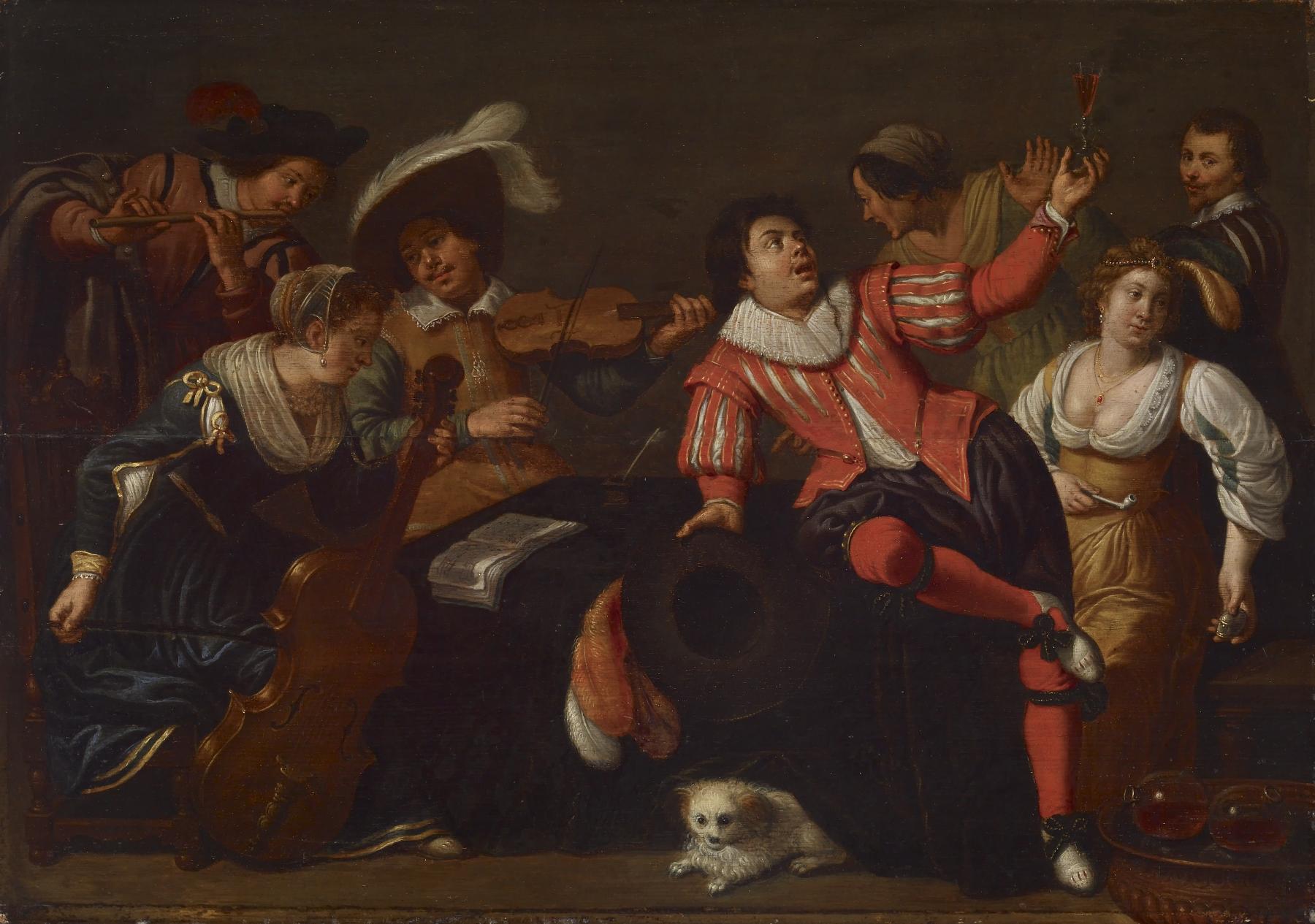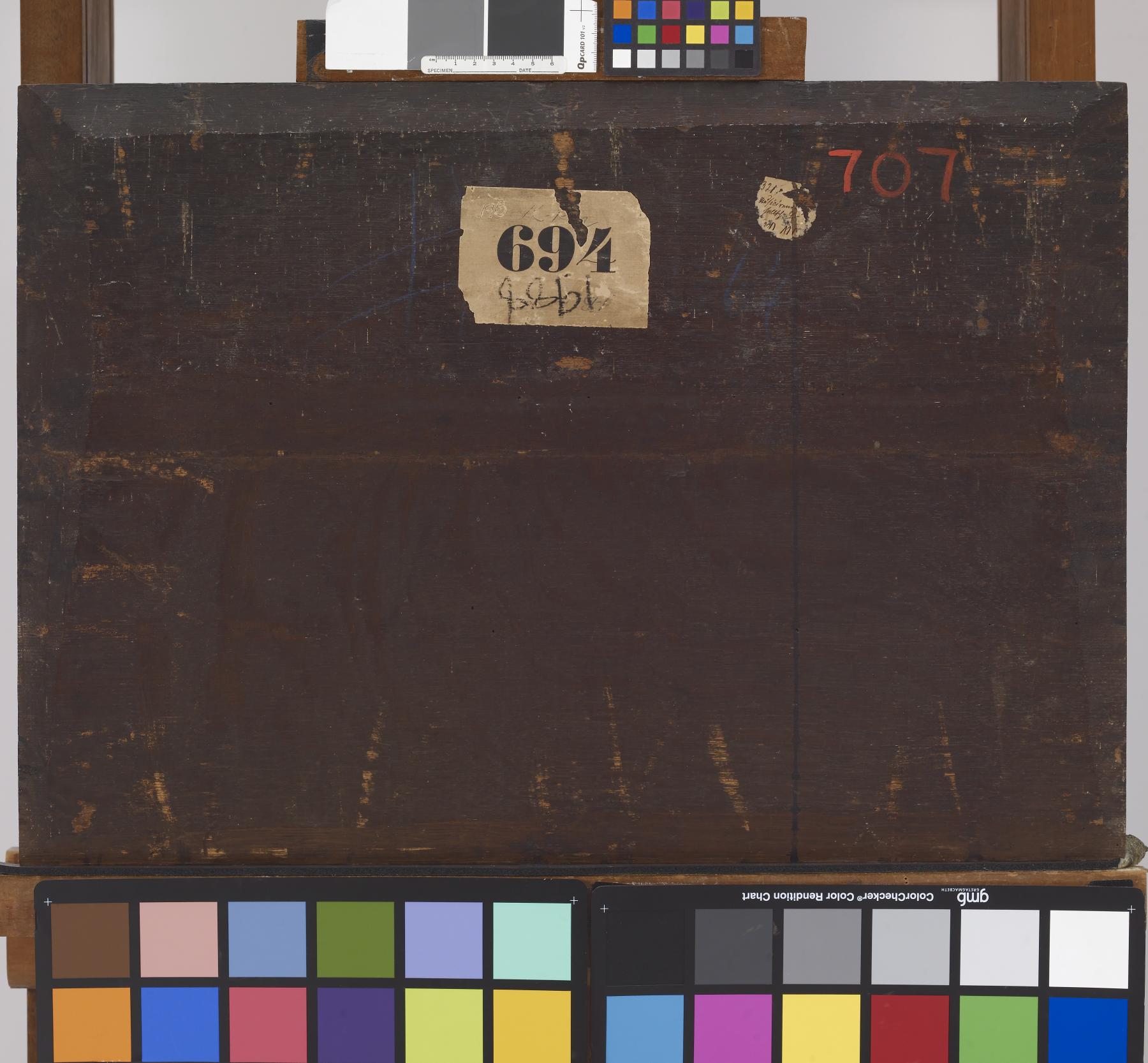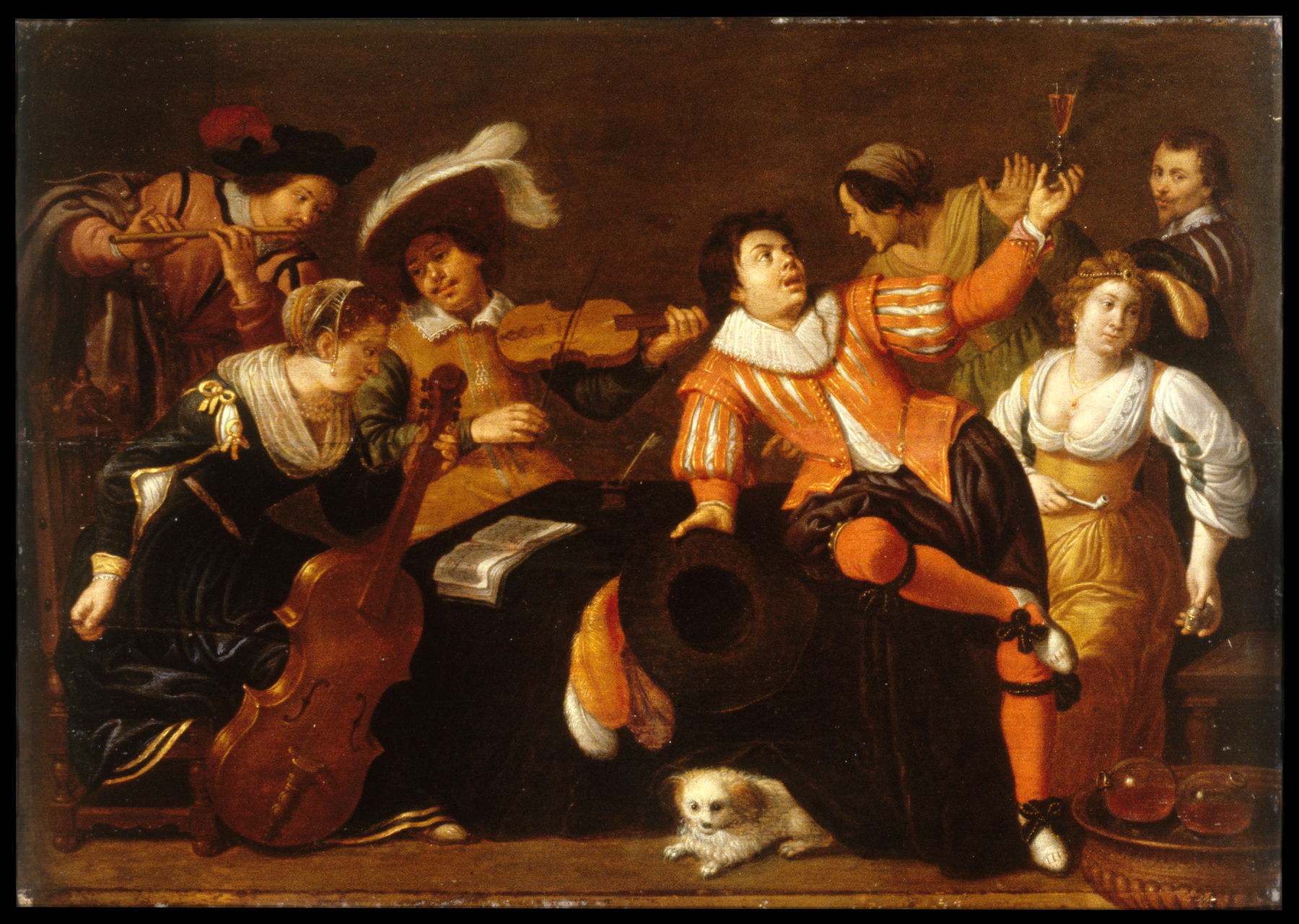Merry Company
(Baroque Europe )
Scenes of young revelers were popular in Dutch art during the 1600s. Some include biblical analogies to suggest that a moral life avoids just such an easy life given over to indulging the senses. These scenes were also enjoyed as a vicarious experience of the relaxed morals of the inn or brothel within an otherwise strict society.
The artist, who is looking at us, contrasts the calm harmony of the neatly dressed, music-making trio on the left with the raucous threesome at the right: one woman scolds, the second is lethargic from smoking and indecorously dressed, while the man, unbuttoned literally and figuratively, lounges on the table with his wine. The bright colors increase the festive mood and encourage the eye to wander over the surface. This small version of a larger composition by Van Bylert was produced by his workshop to satisfy a wider market.
Provenance
Provenance (from the French provenir, 'to come from/forth') is the chronology of the ownership, custody, or location of a historical object. Learn more about provenance at the Walters.
Don Marcello Massarenti Collection, Rome; Henry Walters, Baltimore, 1902, by purchase; Walters Art Museum, 1931, by bequest.
Exhibitions
| 1971-1972 | World of Wonder. The Walters Art Gallery, Baltimore. |
Geographies
Netherlands, Utrecht (Place of Origin)
Measurements
H: 16 x W: 22 13/16 in. (40.6 x 58 cm)
Credit Line
Acquired by Henry Walters with the Massarenti Collection, 1902
Location in Museum
Not on view
Accession Number
In libraries, galleries, museums, and archives, an accession number is a unique identifier assigned to each object in the collection.
In libraries, galleries, museums, and archives, an accession number is a unique identifier assigned to each object in the collection.
37.707








